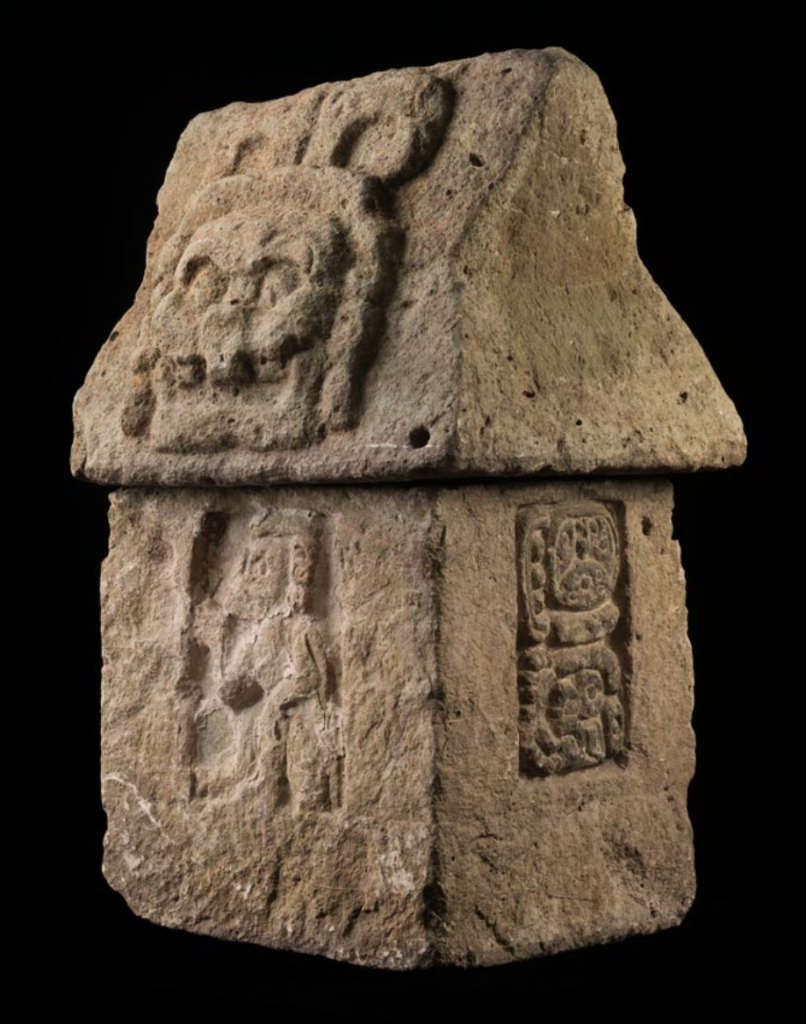
This sculpture of a house was uncovered by archeologists during the 1890s at the site of the ancient Mayan city of Copán in modern day Honduras. Copán has been designated as a UNESCO World Heritage Site for the extensive collection of Mayan art, architecture, and sculptures that have been preserved there (Doyle). In a way, this particular work, estimated to have been made between 550 and 900 A.D., could be classified as all three. It was the centerpiece of an exhibit at the Metropolitan Museum of Art in New York City called “Design for Eternity: Architectural Models from the Ancient Americas” in 2016 (Doyle).
Because of its size, meaning, and importance to the Mayans, this house mold is a very significant piece of ancient Latin American art. It is believed that sculptures of houses such as this one were used in ceremonies that dedicated and blessed new houses (Doyle). Structurally, the mold consists of two parts: the roof and the base/living area. The roof consists of an engraving of a skull, which is believed to represent the patron deity of the Mayan royal family. On the sides of the base, an engraved deity occupies one side while hieroglyphs are located on two opposite sides. The hieroglyphs are especially symbolic because when translated, they convey information about the piece, which in this example translates to “sleeping places for the gods”. This shows that these sculptures were viewed as homes for Mayan gods and goddesses that connected them to the physical world (Doyle).
Today, we use relics like this model of a house to study Mayan culture and history. Due to colonialism, much of the indigenous of Latin America is gone, so historians use artifacts to examine how ancient civilizations worked and sustained themselves.
Doyle, James. “Do Gods Sleep? Ancient Maya Deity Houses at Copán, Honduras.” metmuseum.org. The Metropolitan Museum of Art, April 20, 2016. https://www.metmuseum.org/blogs/now-at-the-met/2016/ancient-maya-deity-houses.
House form, A.D. 550–900. Copán, Honduras. Maya. Stone (rhyolite); H. 15 3/4 in. (40 cm) x W. 14 9/16 in. (37 cm). © President and Fellows of Harvard College, Peabody Museum of Archaeology and Ethnology, PM# 92-49-20/C20 & 92-49-20/C20 (digital file #99260010)
